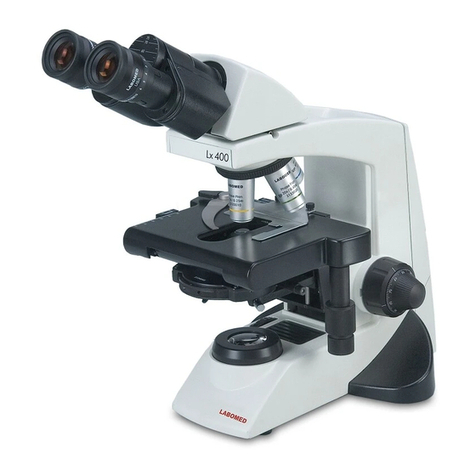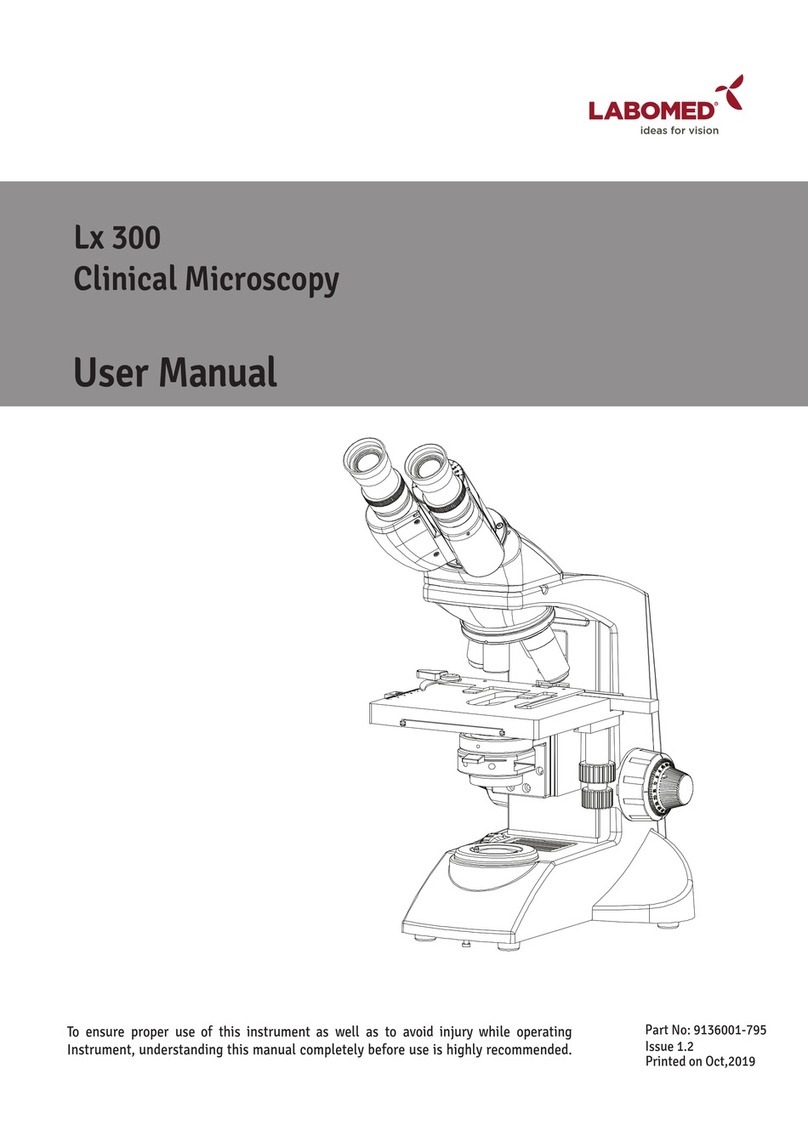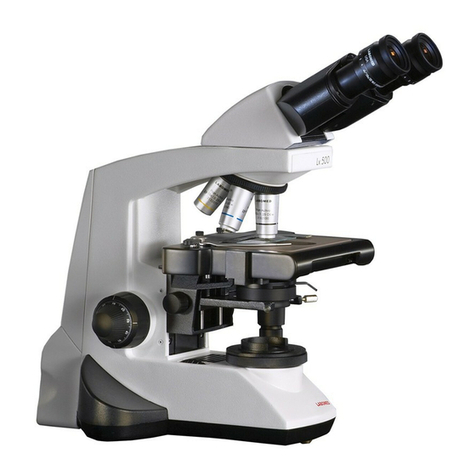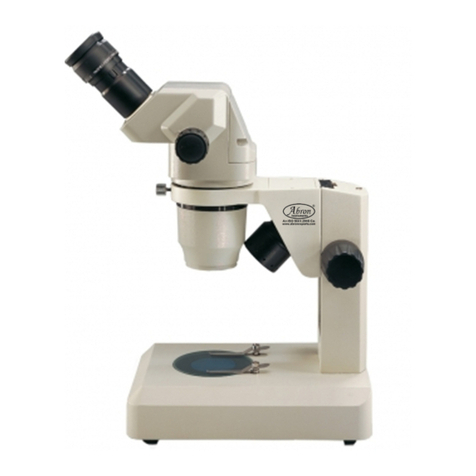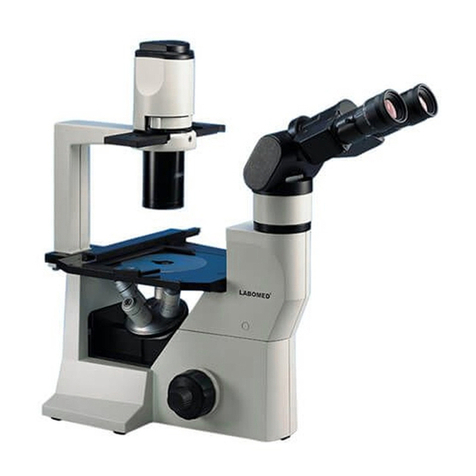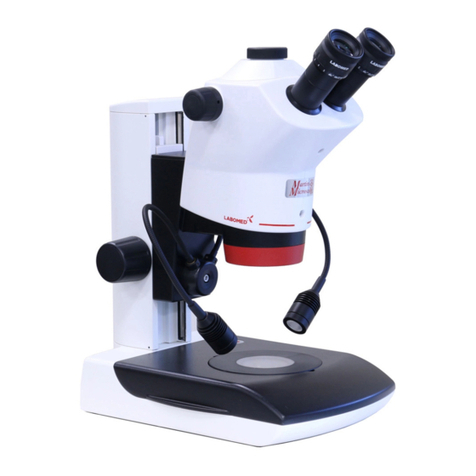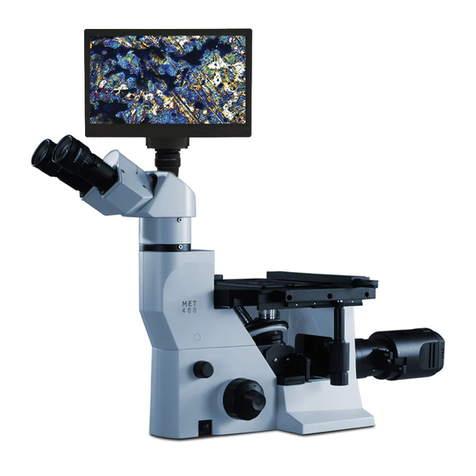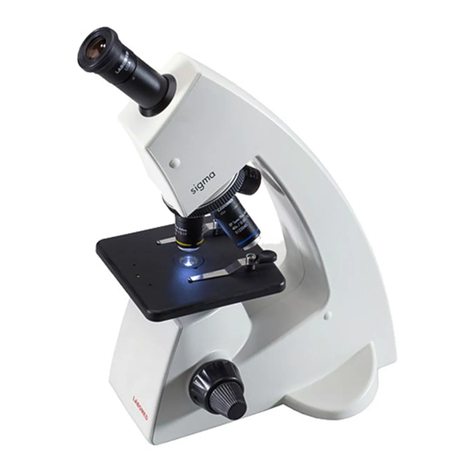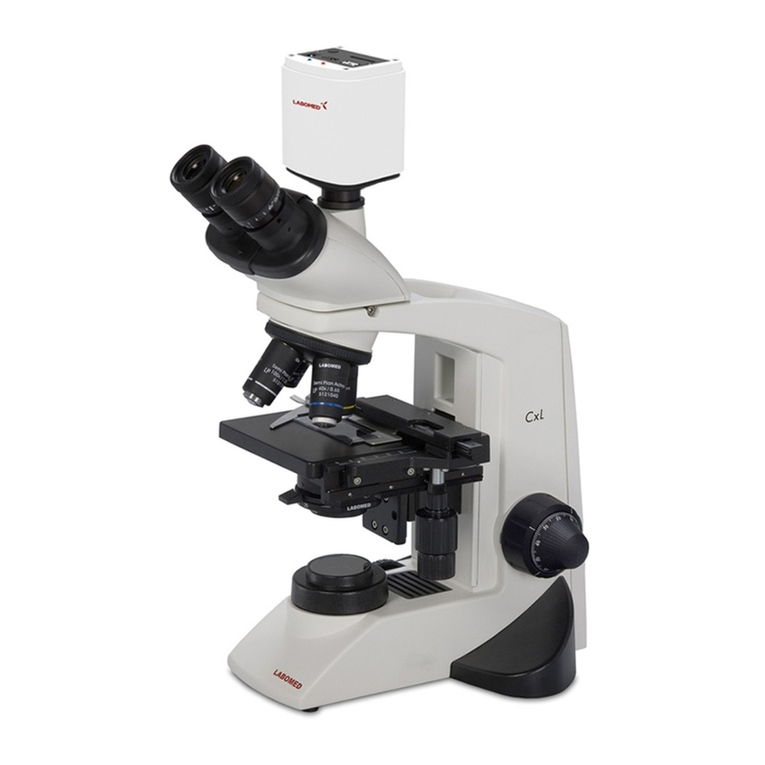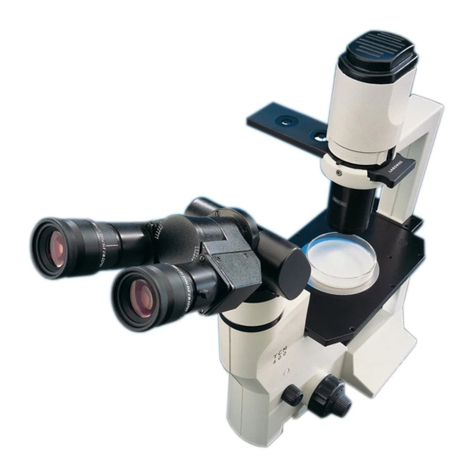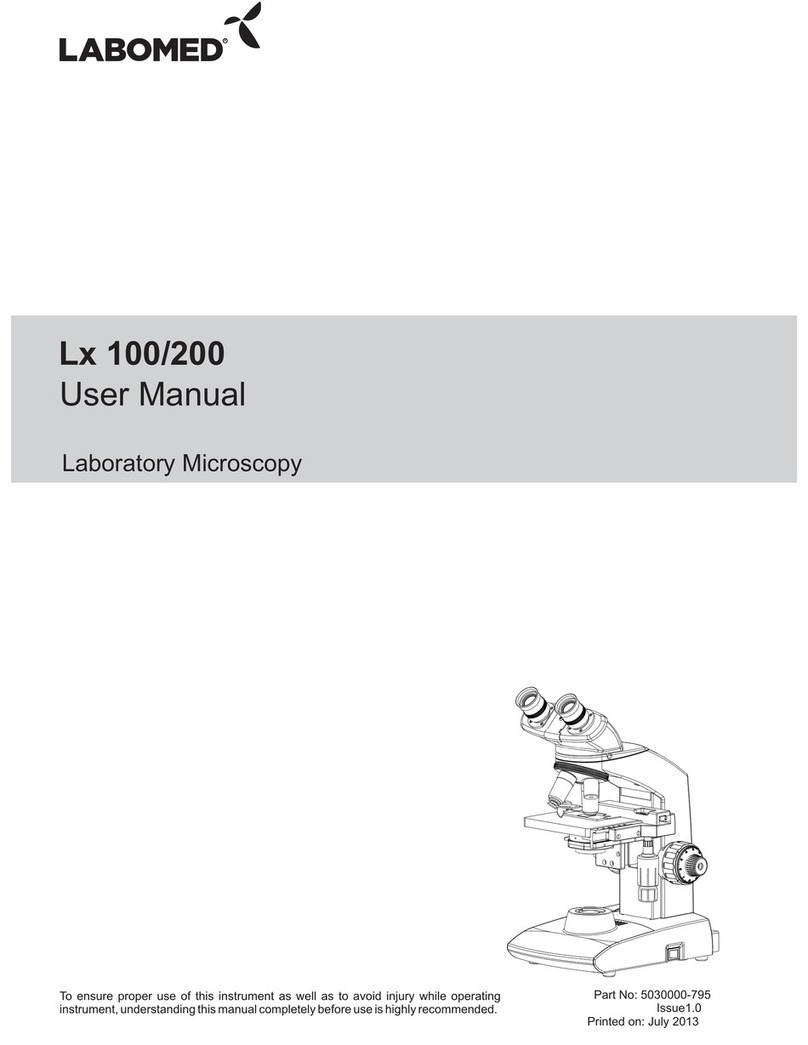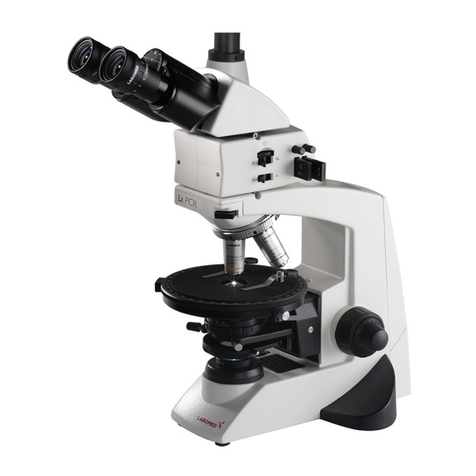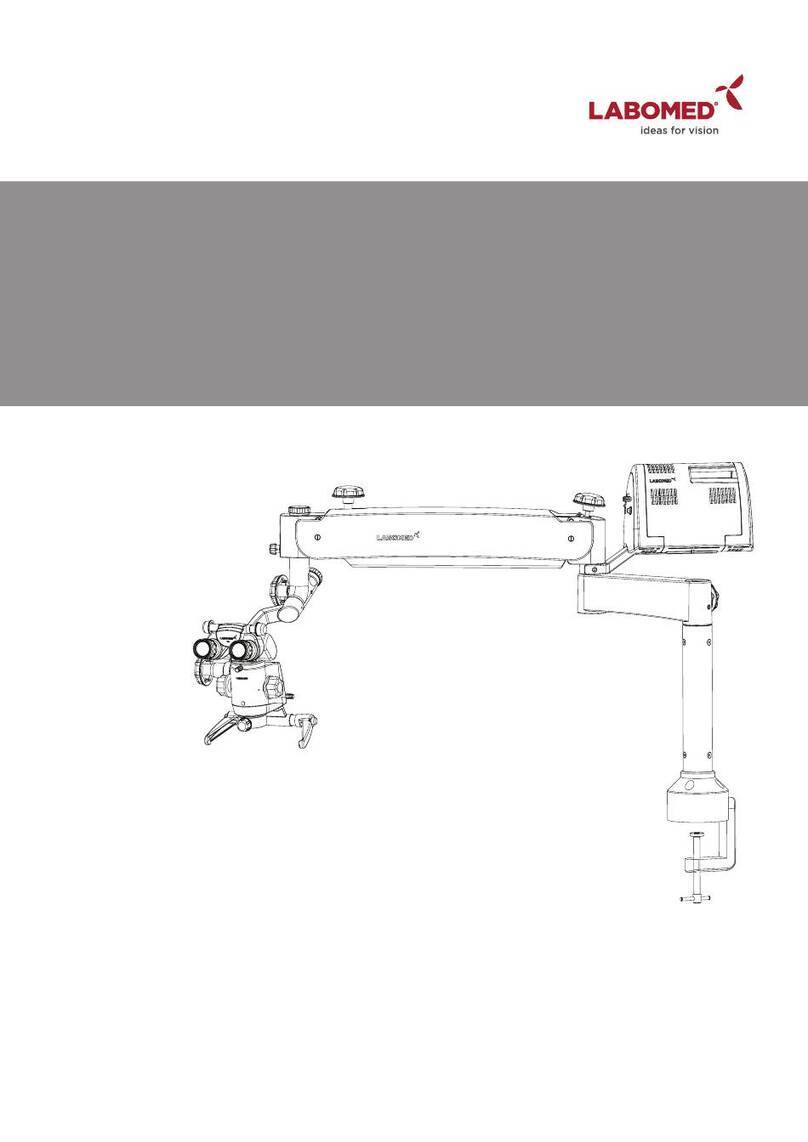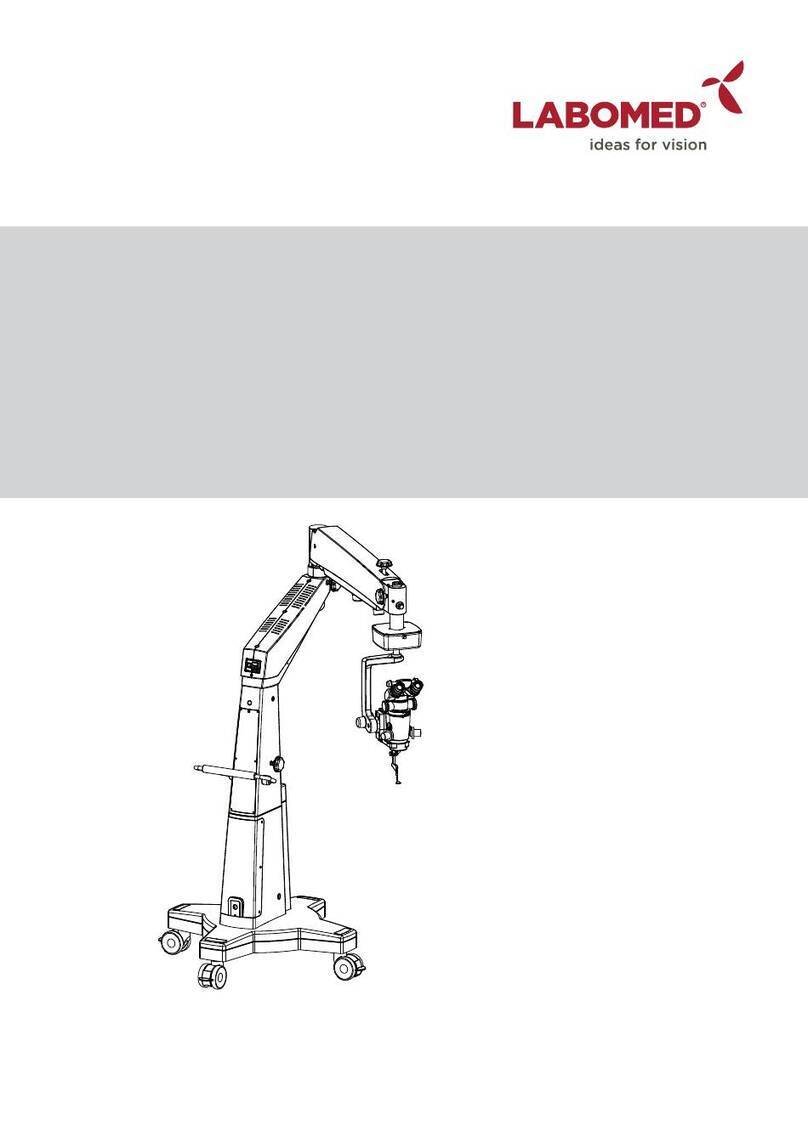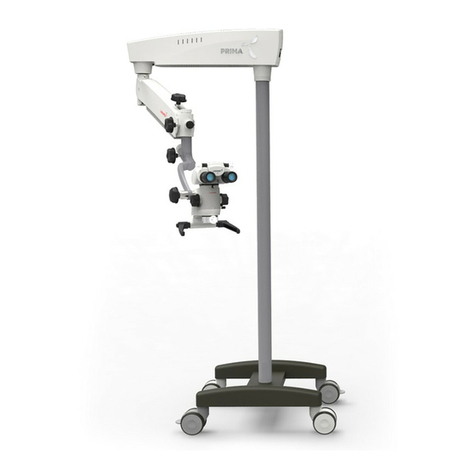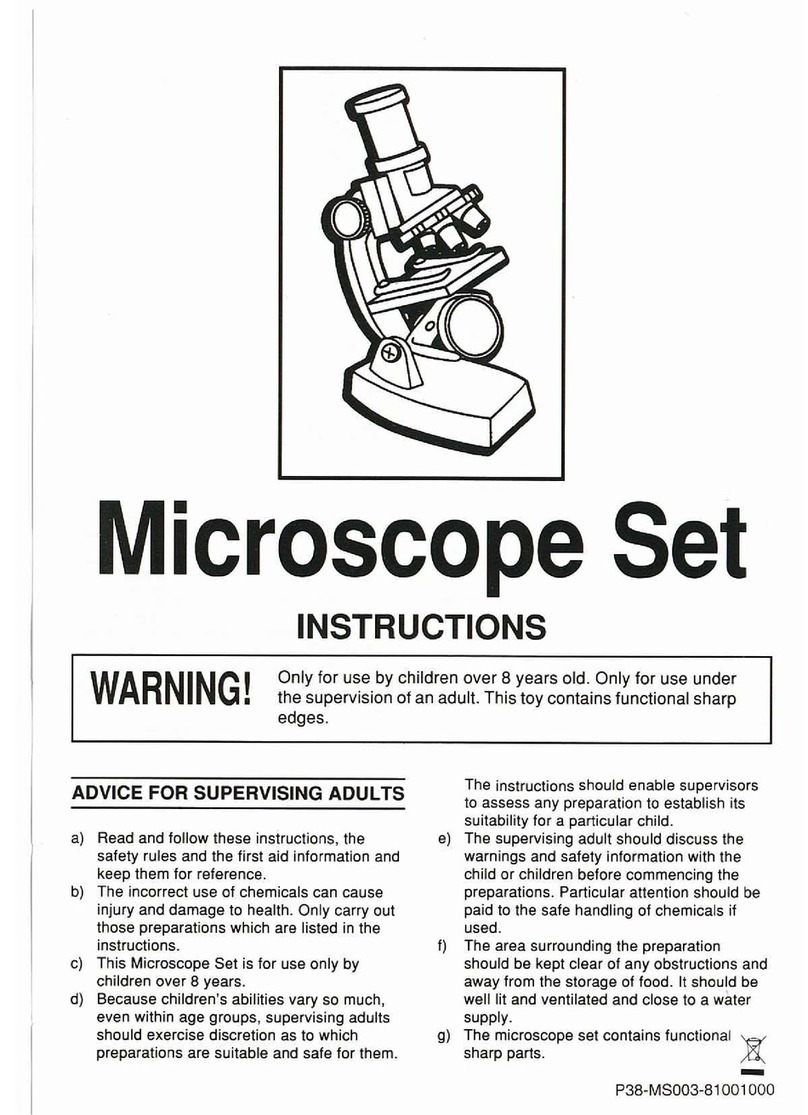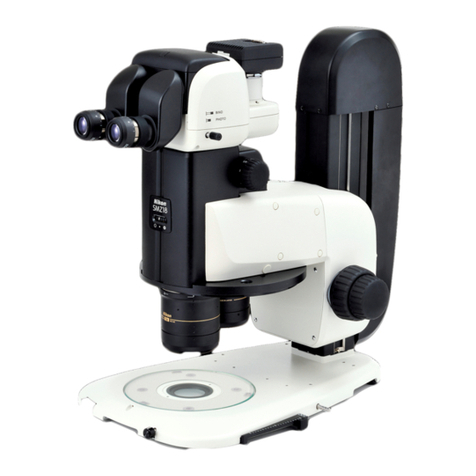1. A microscope is a precision instrument with delicate glass components.
Please handle with care.
2. Do not use the microscope where it is subjected to direct sunlight, high
temperature,humidity, dust and vibrations. (For the operating
conditions, see chapter 14, "SPECIFICATIONS")
3. The microscope is ventilated by natural convection. Be sure to leave
enough space (10 cm or more) around body when installing the unit.
4. Arm handle is provided for carrying the microscope.
To prevent damage, do not hold the microscope by the stage or
observation tube.
Be sure to remove the specimen from the stage clip while
transporting unit to avoid damage to the specimen slide.
1
2
Getting Started
1. Clean all glass components by wiping gently with cleaning cloth provided. To remove fingerprints or oil smudges,
wipe with cleaning cloth slightly moistened with a mixture of petroleum (85%) and isopropanol (15%).
Since solvents such as petroleum and isopropanol are highly flammable, they must be handled carefully.
Be sure to keep these chemicals away from open flames or potential sources of electrical sparks - for
example, electrical equipment that is being switched “ON” or “OFF”. Also remember to always use these
chemicals only in a well-ventilated room.
2. Do not attempt to use organic solvents to clean the microscope components other than the glass components. To
clean non-glass components, use a lint-free, soft cloth slightly moistened with a diluted neutral detergent.
3. Do not disassemble any part of the microscope as this could result in malfunction or mitigated performance.
4. When not using the microscope, ensure that the frame is fully cooled
before storing the unit in a dry locker or covering with a dust cover
(provided).
5. To clean the condenser/phase turret, fully loosen the securing thumb
screw(1) and remove the condenser then, wipe the front lens of the
condenser with optical cleaning solution (mixture suggested above)
and lens tissue.
The condenser can be re-attached by replacing the condenser in its
seat, tightening securing thumb screw, and raising condenser bracket
to desired position.
6. Be sure to observe your local rules/regulation for product disposal.
Fig. 2
Fig. 3
Maintenance and Storage
3
Caution
If the microscope is used in a manner not specified by this manual, the safety of the user may not be warranted. In
addition, the equipment may also suffer damage. Always use the equipments as outlined in this instruction manual.
1
R
